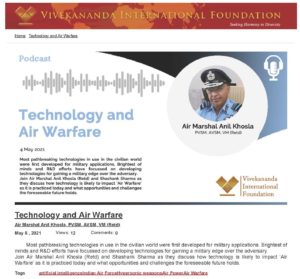1
Victory smiles upon those who anticipate the changes in the character of war, not upon those who wait to adapt themselves after the changes occur.
– Giulio Douhet
Change before the warfare changes or rather –
BE THE CHANGE
2
It may be said that warfare has acquired a new phase – technological war. In the past, research and development were only preparation for the final and decisive testing of new systems in battle. Today the kind and quality of systems which a nation develops can decide the battle in advance and make the final conflict a mere formality or can bypass conflict altogether.
– Gen Bernard Schriever
Harness future technology for military use –
NOW
3
New conditions require, new solutions new weapons and imaginative methods for maximum application. New Wars are never won in the past.
– Douglas MacArthur
IDEATE, IDEATE and IDEATE – preferably
OUT OF THE BOX
4
An air force is always verging on obsolescence and, in time of peace, its size and replacement rate will always be inadequate to meet the full demands of war. Military air power should, therefore, be measured to a large extent by the ability of the existing air force to absorb in time of emergency the increased requirements of the war together with new ideas and techniques.
– Hap Arnold
Have a plan A & have a plan B – More important
HAVE A OPEN MIND FOR PLAN C
5
In military systems, the second step in the development of a radically new concept must be determined after operational deployment. The war fighters will use the system in innovative ways not described in the manuals, and it is this experience that will define the path to revolution.
– USAF Scientific Advisory Board
Fastest Way to operationalize a weapon or system is –
Operational Deployment in LIVE EXERCISE
Value additions are most welcome
For regular updates please register here –


